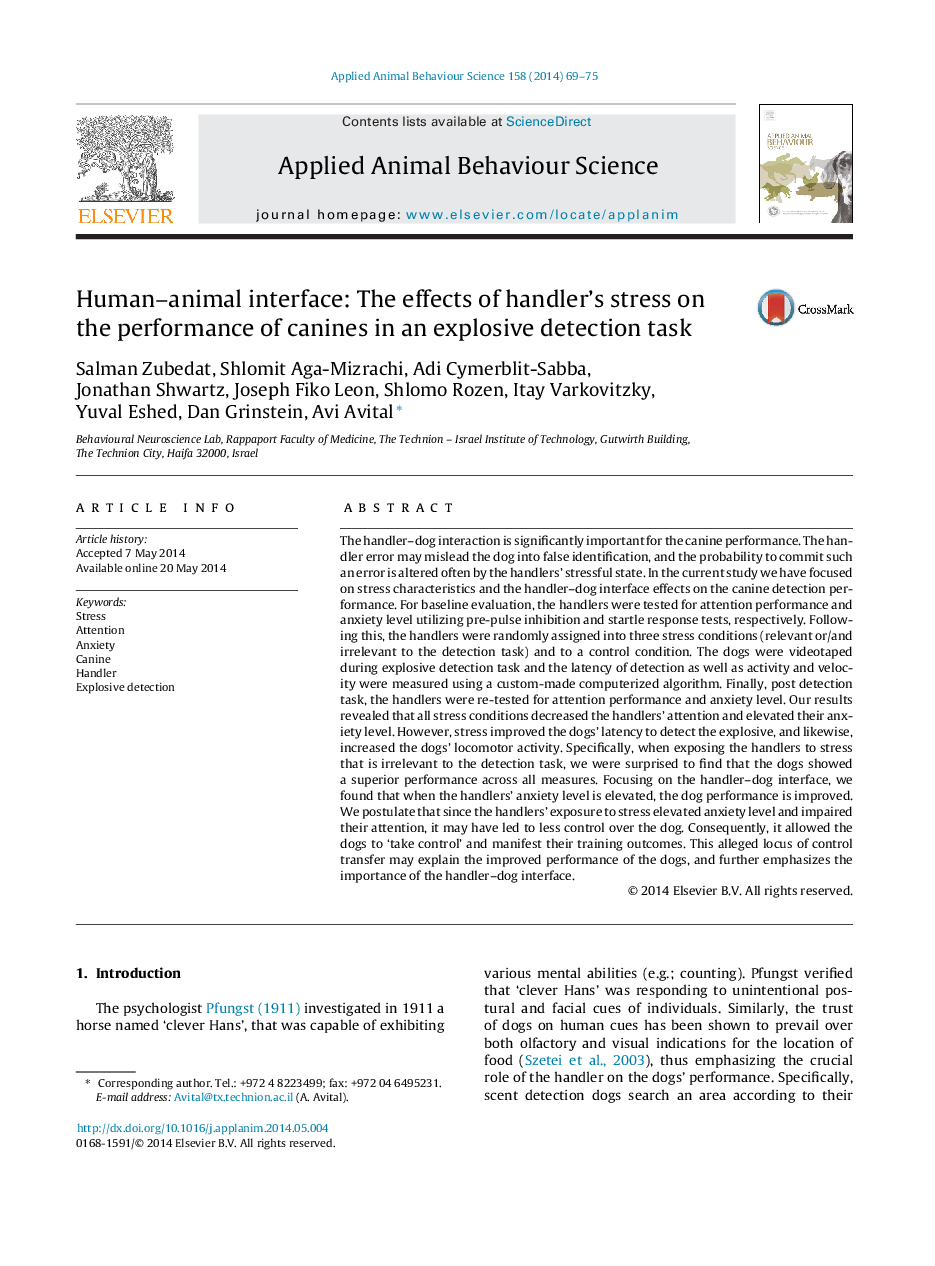| کد مقاله | کد نشریه | سال انتشار | مقاله انگلیسی | نسخه تمام متن |
|---|---|---|---|---|
| 4522568 | 1625348 | 2014 | 7 صفحه PDF | دانلود رایگان |
• Handlers’ attention and anxiety measured before and after the exposure to stress.
• The canines’ behavior was objectively measured during an explosive detection task.
• Exposure of handlers to ‘irrelevant stress’ yielded a superior canines performance.
• When the handlers’ anxiety level is elevated, the dog performance is improved.
The handler–dog interaction is significantly important for the canine performance. The handler error may mislead the dog into false identification, and the probability to commit such an error is altered often by the handlers’ stressful state. In the current study we have focused on stress characteristics and the handler–dog interface effects on the canine detection performance. For baseline evaluation, the handlers were tested for attention performance and anxiety level utilizing pre-pulse inhibition and startle response tests, respectively. Following this, the handlers were randomly assigned into three stress conditions (relevant or/and irrelevant to the detection task) and to a control condition. The dogs were videotaped during explosive detection task and the latency of detection as well as activity and velocity were measured using a custom-made computerized algorithm. Finally, post detection task, the handlers were re-tested for attention performance and anxiety level. Our results revealed that all stress conditions decreased the handlers’ attention and elevated their anxiety level. However, stress improved the dogs’ latency to detect the explosive, and likewise, increased the dogs’ locomotor activity. Specifically, when exposing the handlers to stress that is irrelevant to the detection task, we were surprised to find that the dogs showed a superior performance across all measures. Focusing on the handler–dog interface, we found that when the handlers’ anxiety level is elevated, the dog performance is improved. We postulate that since the handlers’ exposure to stress elevated anxiety level and impaired their attention, it may have led to less control over the dog. Consequently, it allowed the dogs to ‘take control’ and manifest their training outcomes. This alleged locus of control transfer may explain the improved performance of the dogs, and further emphasizes the importance of the handler–dog interface.
Journal: Applied Animal Behaviour Science - Volume 158, September 2014, Pages 69–75
